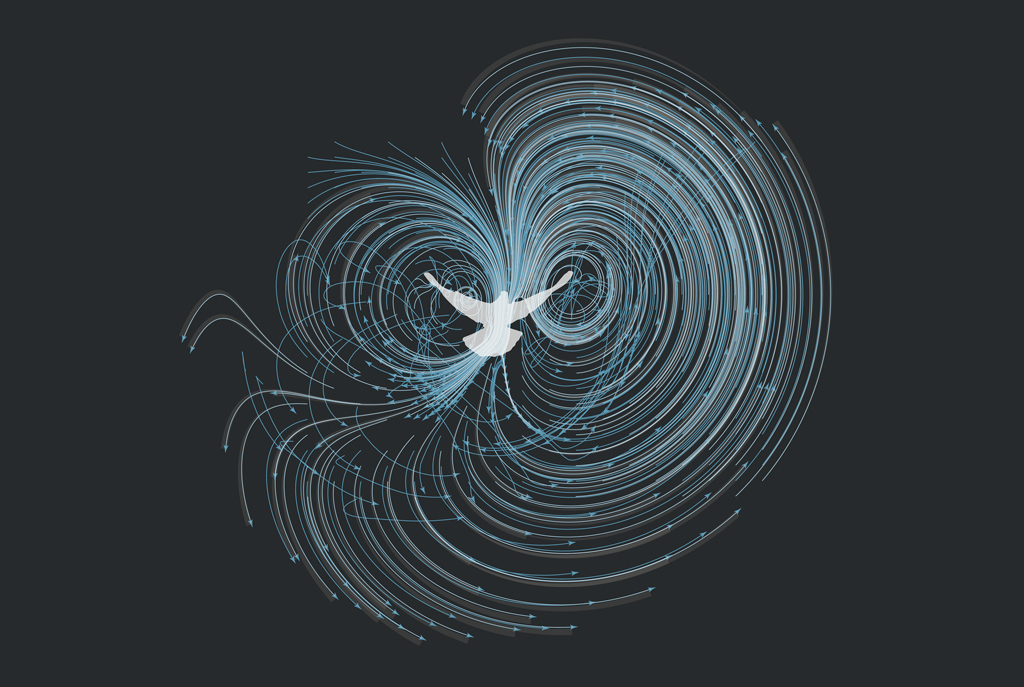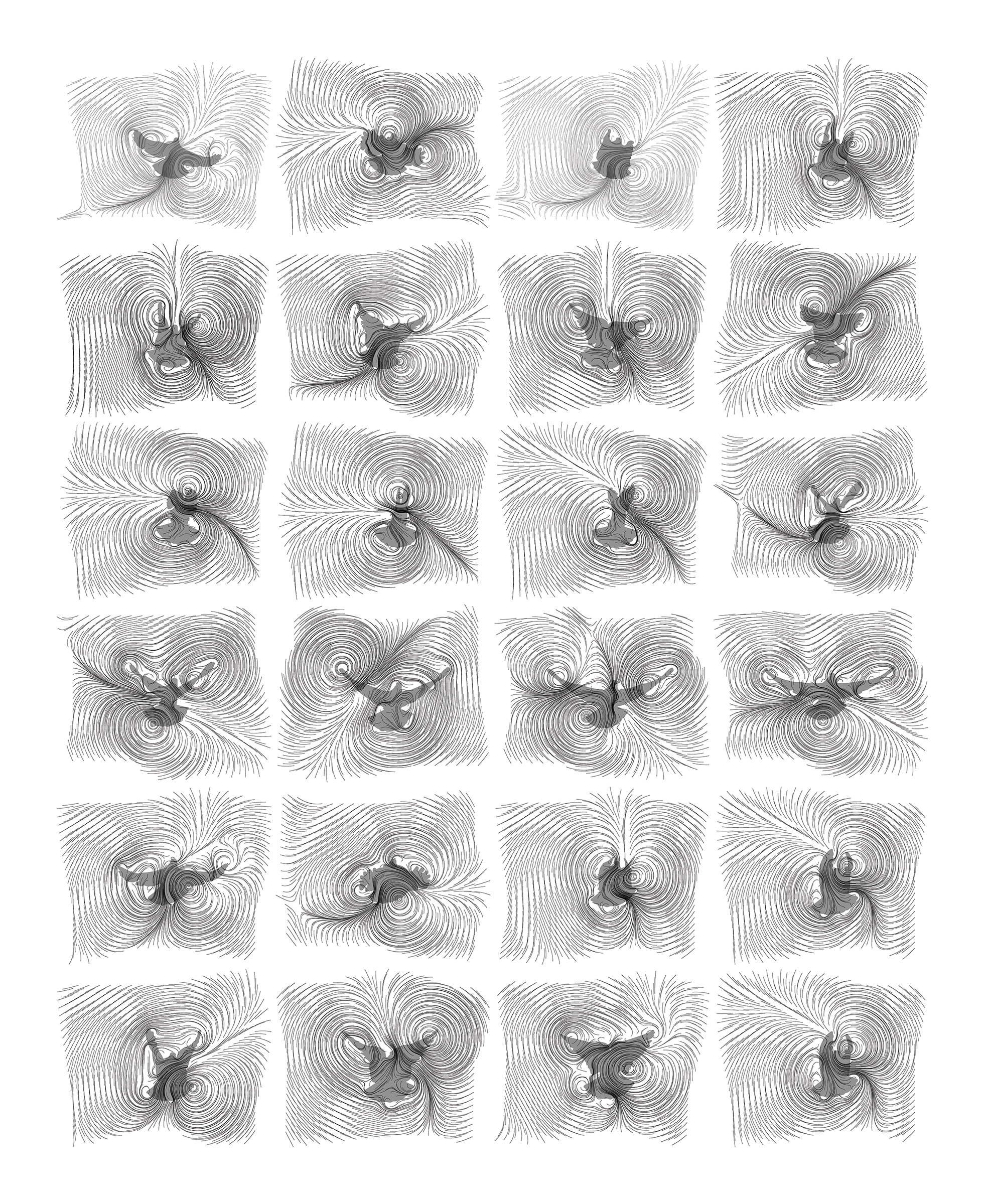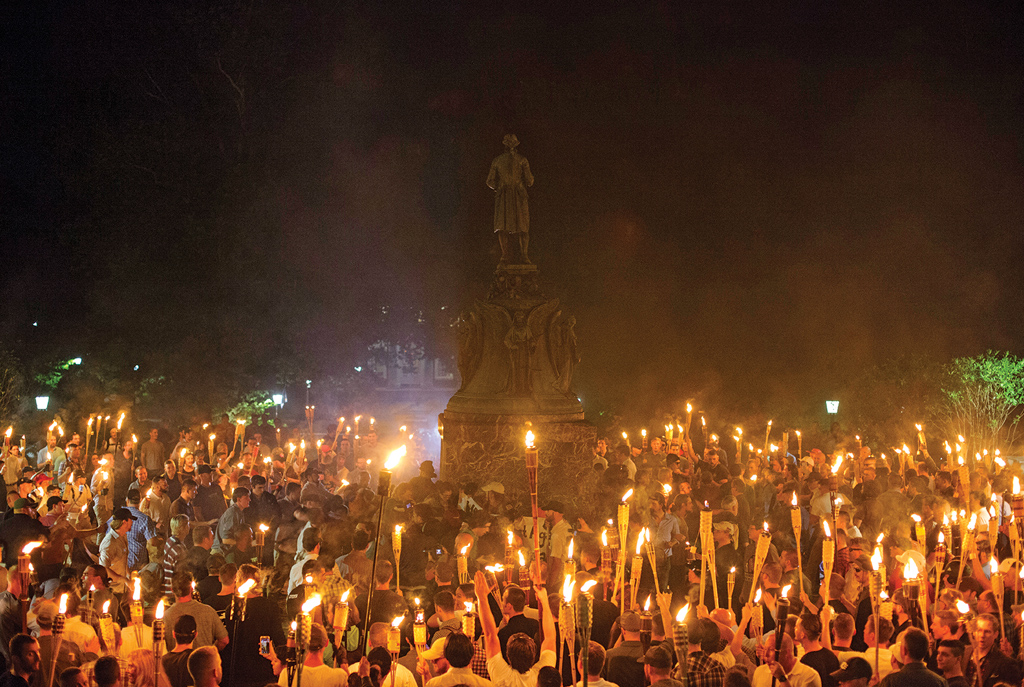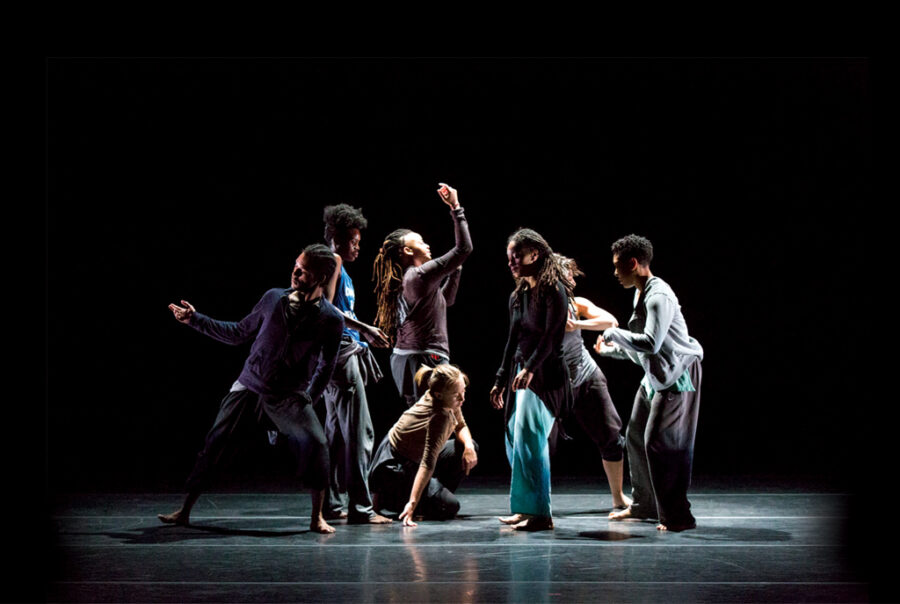Embracing Unpredictability: Professor Chris Chenier

Adjunct Assistant Professor of Art Christopher Chenier explores the risks and rewards of code as a creative medium, employing custom software and found footage to stage and execute chance operations in a process of form-finding known as generative design. Here, Chenier describes his process and the inspiration behind his most recent projects.
The mathematician Claude Shannon proposed that information is the resolution of uncertainty. I find this phrase inviting and hopeful, yet totally abstract.
Flowfield 1: 24 Frames (shown below) and Flowfield 2: F13 (shown above) are drawings created using found footage and custom software I wrote for Wesleyan magazine.
Inspired by the 19th-century photography of Ètienne Jules-Marey and Eadweard Muybridge, the drawings are an offshoot of sculptural projects I developed in 2018 and 2019 using similar techniques. In either mode, my efforts are focused on writing software that “transcodes” information from one medium to another: exploring relationships between images and objects and colliding data formats to observe what is produced.
My methods are like architectural form-finding, a design process wherein materials are arranged in a system and allowed to self-organize. This results in the emergence of forms that reflect mathematical and physical relationships rather than explicit instructions or gestures by the artist. Working in this way has freed me to step back and observe these relationships as they emerge and assess their potential for further research.

While computers can be controlled with great precision, I’m more interested in writing programs that have a tendency toward unpredictability. Given my source material, it feels natural to release control to the machine. The computer doesn’t care whether it is processing video footage, voicemail, or stock prices—all it wants is data.
Computers can pull time like taffy. They can knead it like dough. My software creates forms that stretch, loop, and harden as the simulation runs. It highlights chance outcomes and surprising glitches. The latter sometimes opens paths for new projects, but frequently just crashes my computer. That uncertainty is what I love about working digitally. The range of potential outcomes from a given process can be endless. This creates opportunities for risk, failure, hope, and reward.
—CHRIS CHENIER




